Fashion Design Production Plan Part 1: All About Full-Service Manufacturing
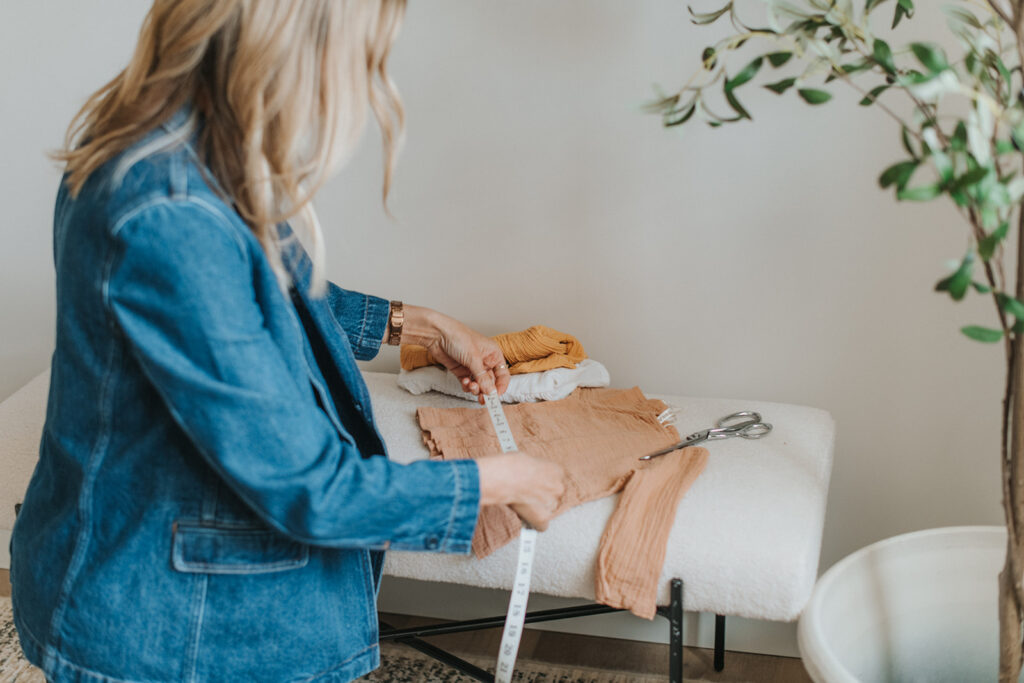
One of the most thrilling and rewarding parts of being a fashion designer is seeing your design come to life. There’s nothing quite like holding an actual garment that you imagined and designed from scratch. But those new clothes don’t just appear out of nowhere – they go through an extensive manufacturing process to arrive on your doorstep. And as a clothing brand owner, you need to determine which fashion design production plan makes the most sense for your business.
If you’re a new or aspiring clothing brand owner, don’t let this part overwhelm you! You have two main choices for production:
- Full-Service Manufacturing: an all-inclusive approach where the manufacturer handles every detail throughout the production process.
- Contract Manufacturing: an option where the fashion designer sources the fabrics & trims, and collaborates with a pattern maker independently, while the manufacturer focuses solely on the assembly and production of the garments.
Check out the deep dive on contract manufacturing here.
In this post, I’m breaking down everything you need to know about full-service clothing manufacturers. For my brand Tiny Threads, I used a full-service manufacturer. With Persnickety Clothing, we used a contract manufacturer (CMT-cut, make, trim).
Key Takeaways Ahead:
- My Personal Experience With Manufacturing
- How Full-Service Manufacturing Works Step-By-Step
- Pros & Cons Of Full-Service Manufacturing
- Developing Your Own Fashion Design Production Plan
- Final Thoughts
- Your Next Steps
My Personal Experience With Manufacturing
I’ve had experience working with both types of manufacturing for my two different clothing brands – Persnickety and Tiny Threads. We chose contract manufacturing for Persnickety back in 2009 because we had access to one very close by and we wanted the freedom of having fabrics we wanted to use right at our fingertips.
At the time, I didn’t know of other options or have the experience to even know the right questions to ask about the different processes out there. We were sourcing our own fabric, creating our own patterns, and then collaborating with an independent pattern maker. The process was complicated and took a long time because of all the details to manage.
But when I had my most recent child in 2017, and I was running my second clothing brand, I knew I needed a simpler manufacturing process. So I chose to do full-service manufacturing for Tiny Threads. My pattern maker who I had been working with for years had a lot of experience in manufacturing, so he managed our manufacturing in India.
Main takeaway here: I’ve experienced both full-service and contract manufacturing, and there isn’t a right or wrong answer. Both options fit best under different circumstances.
Although both manufacturing options both have pros and cons, I highly recommend full-service manufacturing for beginners. Ultimately, you need to determine which option aligns with your current business model, budget, and timeline. Be sure to read through the pros and cons of each type of manufacturing to make the best decision for your own business!
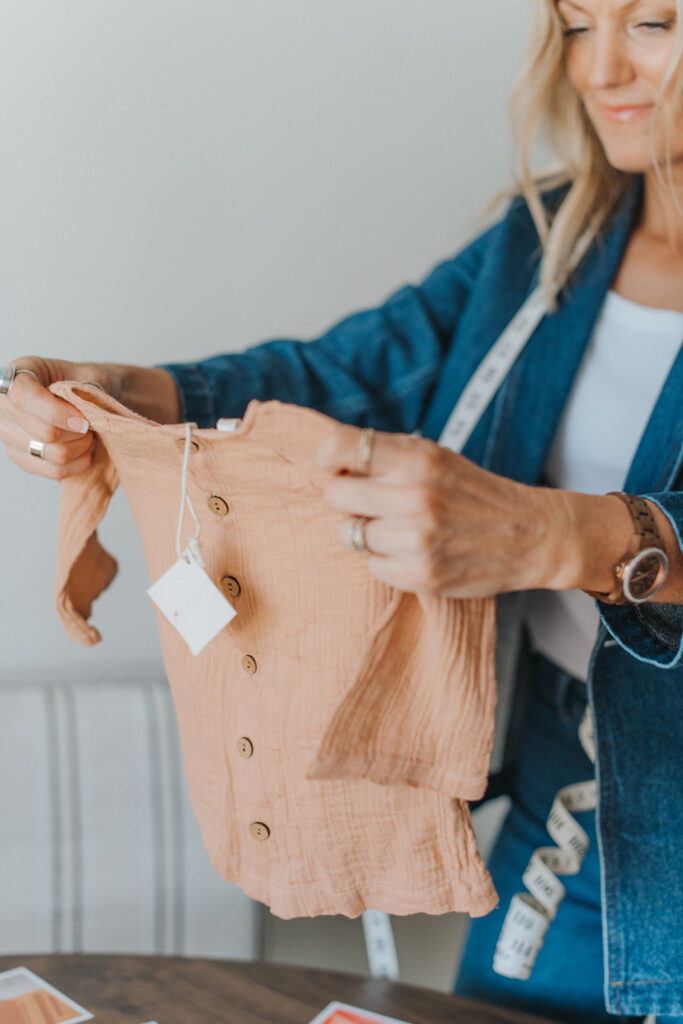
How Full-Service Manufacturing Works Step-By-Step
So, what does full-service manufacturing actually look like? Here’s the breakdown:
1. Initial Consultation
You’ll kick things off with an initial meeting where you and the manufacturer get on the same page about your vision. Whether you are creating a single product or a collection, you will want to lay the foundation and share your vision with them. Show them your mood boards and sketches so they can clearly see your ideas and understand the vibe and style of your collection.
Think of this as laying the foundation for a successful production partnership. Ask them for feedback and things they can share with you to ensure success while working together. Because every manufacturer has its ways and its strengths plus ways of doing things, getting those details out up front will save headaches down the road.
Do the same and be very clear with them on how you operate, what they can expect from you, as well as what you are hoping for at the end. Then, make sure you understand each other’s processes so that you can move forward on the right foot.
Tip: Be clear and specific about your ideas – don’t just describe what you want, show it! The more visuals and examples you bring to the table, the better.
2. Fabric Sourcing
Next up, the manufacturer will source fabrics that match your vision. This can include anything from sustainable textiles to unique prints or materials you can’t easily find on your own.
If you are meeting the factory’s minimums, you can have your fabrics made for your production exactly how you want. If you don’t, you will need to source with them, which will limit your options.
Tip: Ask for fabric swatches! This gives you the chance to touch, feel, and compare materials before making any final decisions.
3. Pattern Development
Whether you work with your own pattern maker or the in house pattern maker, you will need to make sure your pattern is fully developed and tested before you go into production.
Think of your pattern as the blueprint – it is so important not to skip on details. You or a technical designer will create your tech pack to ensure all of the details are written down and clearly communicated.
Tip: Don’t rush this part! Review the sample patterns carefully on a body form and make all adjustments you would like. Then make another sample until you get it right. The final perfect sample will be used for production.
4. Sample Creation
Once the patterns are in place, it’s time for sample creation. This is where you’ll see a prototype of each garment before moving into full production.
Tip: Treat your samples like gold. Make sure you’re happy with the fit, quality, and construction. Once you greenlight the samples, it’s full steam ahead into production.
5. Grading and Sizing
Next, your manufacturer will grade the patterns into different sizes, ensuring each garment maintains the same look and fit across your entire size range. I like to test every other size before production. If you are using a 3-D software like Clo-3D, you may be able to reduce the number of sample sizes you make to save money. When in doubt, make a sample.
6. Production
Finally, the manufacturer starts full-scale production. The fabric is cut, sewn, and assembled according to your approved patterns, tech packs, and samples. This is where your collection takes its final shape!
7. Quality Control
Part way through the manufacturing process, it is a good idea to have a quality control person to make sure things are going well. The factory will do this internally, but for extra protection, you may consider hiring a 3rd party person to do this.
Once your garments are ready, they go through a detailed quality control process to ensure everything is perfect before hitting the shelves (or your online store!).
→ Need some hand-holding throughout the manufacturing process? I’ll walk you through every single step inside my coaching program. Learn more here.
Pros & Cons Of Full-Service Manufacturing
Let’s break down the pros & cons of using a full-service manufacturer so you can make an informed decision for your business:
Pros:
- Time Saver: When one company handles everything from sourcing to shipping, you save time (and sanity) by avoiding back-and-forth with multiple vendors. It also allows you to reduce your overhead and employees, perfect for those who want to work from home.
- Expertise: A full-service manufacturer brings a team of professionals who specialize in various aspects of clothing production. They know the ins and outs of garment construction, fabric sourcing, and pattern making, so you don’t have to.
- Consistency: You’ll maintain a consistent quality and finish across your collection, which is key to building brand loyalty.
- Scalability: Most full-service manufacturers can handle both small runs for emerging brands and larger quantities as you grow, making them a flexible long-term partner.
- Leftover materials: You don’t have to worry about leftover fabric and trims, the factory does. They handle all of the quantities needed and it is all included in the cost.
Cons:
- Choosing Fabrics: Not having physical fabric in hand can feel limiting, especially to a beginner. It can be challenging to visualize the finished product if you can’t actually handle the fabrics that will be used – so when possible, I recommend getting fabric swatches.
- Less Control Over Sourcing: Relying on a full-service manufacturer to source your materials gives you less control in the selection process. This can result in compromises on fabric quality, sustainability practices, or specific material characteristics that you might have obtained if you had sourced them yourself. This is why I recommend giving extra attention to your samples to explain what you are looking for.
- Limited Customization: Full-service providers may have pre-existing relationships with certain suppliers or prefer to work with specific materials that align with their manufacturing capabilities. This can limit your ability to customize products fully or experiment with innovative or unconventional materials. Again, make sure you know what they can and can’t do before working with them.
- Communication Challenges: Time zone differences can make communicating difficult, moreso if there is a language barrier. You have to be clear on your main goals so that when challenges arise, you can stay focused on the main goal.
- Scaling Issues: As your brand grows, a full-service manufacturer may not be able to meet increased demands or offer the most cost-effective solutions for scaling up production. This can limit your growth potential or force a switch to a different manufacturing setup at a critical time. On the flip side, they may have connections and partnerships to help you scale making it a win win for both of you.
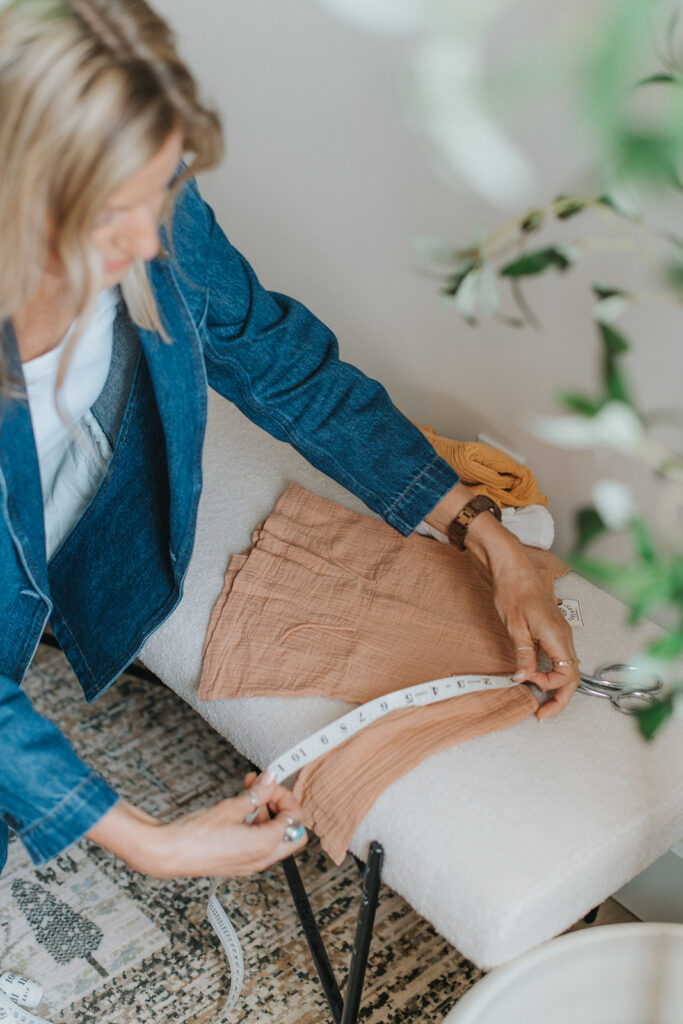
Developing Your Own Fashion Design Production Plan
Now that you’ve learned more about full-service manufacturing and considered the pros and cons, you’ll need to choose your own fashion design production plan. Does full-service seem like the best fit for your business right now?
Before you get to production, though, let’s talk about planning – because let’s face it, jumping in without a roadmap is a recipe for stress.
Here’s how to get started with your fashion design production plan:
1. Start Small: It’s tempting to go big right away, but starting with a few key pieces can save you a lot of headaches (and money). Test the waters, get feedback, and refine your designs.
2. Set a Timeline: Every successful collection is backed by a solid timeline. From design to final production, map out each step so you’re not caught off guard by delays.
Tip: Don’t forget to pad your timeline with buffer zones. You’ll want to plan for hiccups like shipping delays or fabric backorders.
3. Budget Wisely: Knowing your budget is key to making informed decisions. You don’t want to fall in love with a fabric that’s five times your material budget, right? Get cost estimates from your manufacturer and keep track of all expenses.
4. Partner with the Right Manufacturer: Choosing the right full-service manufacturer is crucial. Make sure they align with your brand’s values, can meet your deadlines, and are experts in the type of clothing you’re producing.
Tip: Ask for references or samples from previous clients so you can see their work firsthand.
As a beginner, you truly have so many decisions to make. One way I support my students inside my coaching program for fashion designers, Fruition, is by providing trusted partnerships for their business. My students have access to an expert clothing manufacturer that I’ve known and trusted for many years. There’s nothing like being given access to a resource like this as a beginner!
If this sounds like just what you need in your fashion design journey, learn more about my coaching program here.
5. Plan for Inventory: Will you produce items in bulk or opt for a made-to-order model? Having a clear plan for managing inventory will help you avoid excess stock or stockouts, both of which can hurt your bottom line.
Tip: If you’re new, consider a smaller production run until you have a better idea of customer demand.
Final Thoughts
I have loved both forms of manufacturing for different reasons. It is so amazing to be able to drive to my manufacturer and meet in person as often as needed. I have loved the relationships that I have built with them and getting to know those that are sewing the garments of my brand. It is an element that is so lovely.
However, sometimes that’s not enough – sometimes your phase of life (or any other factors) just require someone else to handle most of the technical details, and that’s okay! Full-service manufacturing is a no-brainer for a brand new fashion designer. It’s the easiest way to get your designs out there into the world.
You can always dive into contract manufacturing as your business grows – or, you never have to! Each business is different. My objective here is to present you with enough information about both types of manufacturing so you can make the best decision for YOU.
Just remember, no matter what you decide, the goal is to create a beautiful working relationship that will last for the long haul. Whenever you start working with someone new, there can be a steep learning curve on both sides. Be patient with them, communicate well, be honest, and give clear instructions and expectations. And remember that you need to give back to them just the same.
Your Next Steps
If you’re ready to start your own fashion brand, I’d love to support you along the way! After creating and growing two clothing brands from the ground up, I’ve been through it all! Now, I passionately teach other women to do the same.
Explore more of the ways I can support you here.

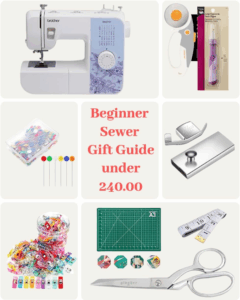
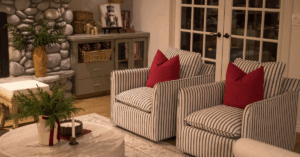

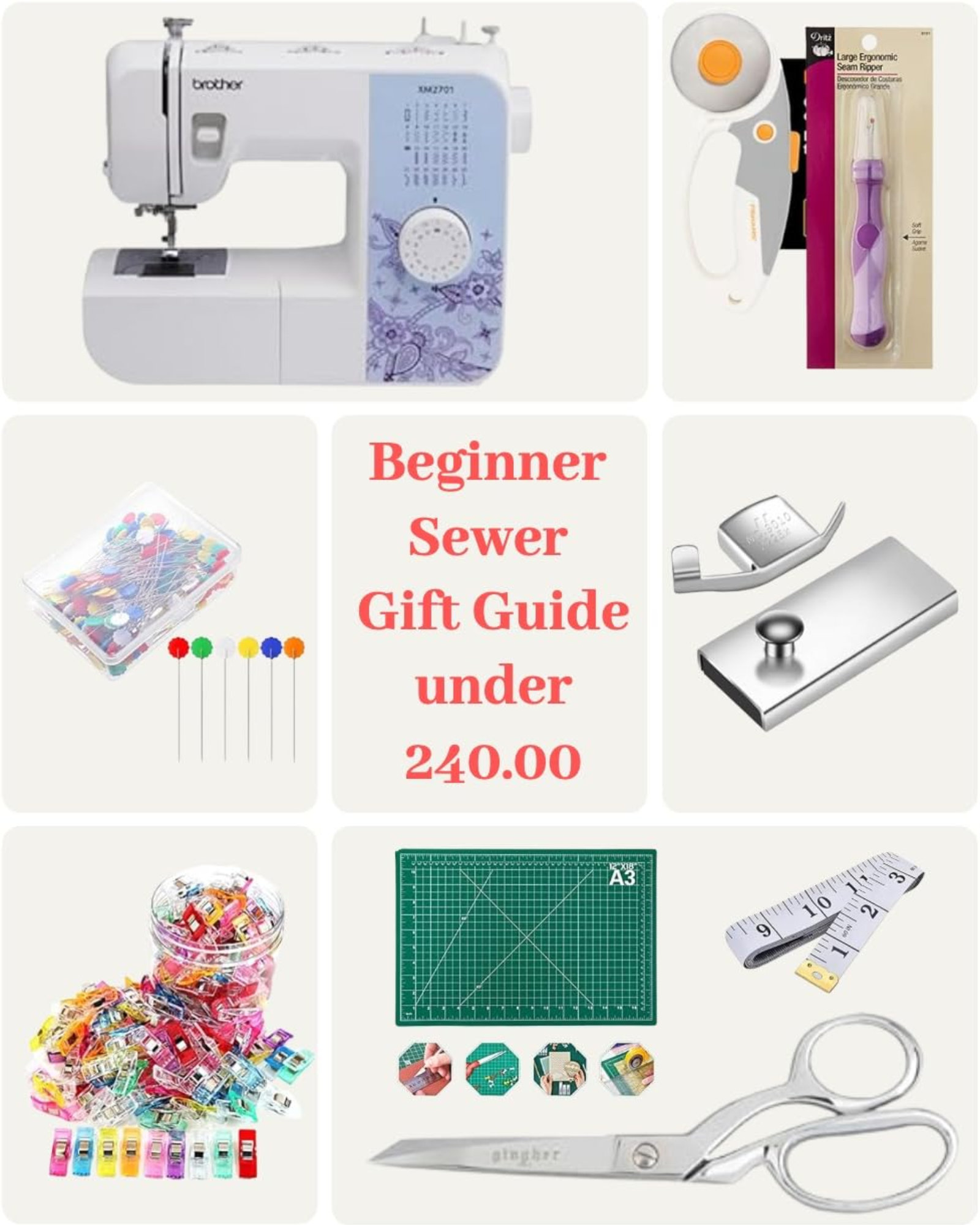



Read the Comments +